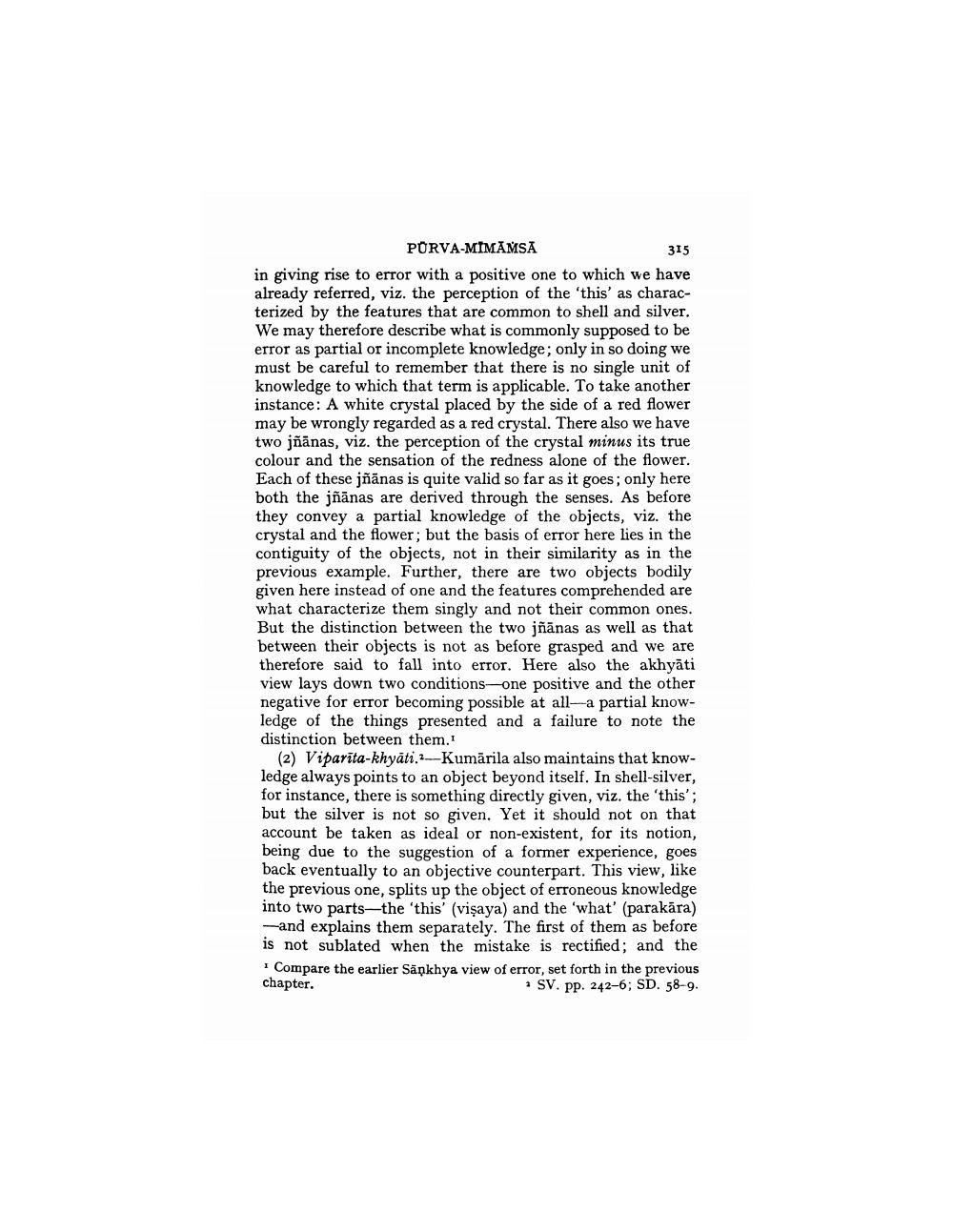________________
PORVA-MIMĀMSA
315 in giving rise to error with a positive one to which we have already referred, viz. the perception of the 'this' as characterized by the features that are common to shell and silver. We may therefore describe what is commonly supposed to be error as partial or incomplete knowledge, only in so doing we must be careful to remember that there is no single unit of knowledge to which that term is applicable. To take another instance: A white crystal placed by the side of a red flower may be wrongly regarded as a red crystal. There also we have two jñānas, viz. the perception of the crystal minus its true colour and the sensation of the redness alone of the flower. Each of these jñānas is quite valid so far as it goes; only here both the jñānas are derived through the senses. As before they convey a partial knowledge of the objects, viz. the crystal and the flower; but the basis of error here lies in the contiguity of the objects, not in their similarity as in the previous example. Further, there are two objects bodily given here instead of one and the features comprehended are what characterize them singly and not their common ones. But the distinction between the two jñānas as well as that between their objects is not as before grasped and we are therefore said to fall into error. Here also the akhyāti view lays down two conditions-one positive and the other negative for error becoming possible at all-a partial knowledge of the things presented and a failure to note the distinction between them."
(2) Viparita-khyāti.--Kumārila also maintains that knowledge always points to an object beyond itself. In shell-silver, for instance, there is something directly given, viz. the 'this'; but the silver is not so given. Yet it should not on that account be taken as ideal or non-existent, for its notion, being due to the suggestion of a former experience, goes back eventually to an objective counterpart. This view, like the previous one, splits up the object of erroneous knowledge into two parts—the 'this' (vişaya) and the 'what' (parakāra)
and explains them separately. The first of them as before is not sublated when the mistake is rectified; and the * Compare the earlier Sänkhya view of error, set forth in the previous chapter.
• SV. Pp. 242-6; SD. 58-9.




